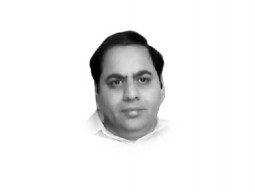
The arrival of a couple of million urban refugees into Karachi from India was not the only demographic shock received by what Steve Inskeep describes in his book, Instant City: Life and death in Karachi. He places Karachi’s extraordinary growth in the context of the expansion of the world’s other large urban areas. “In the United States the population had doubled, but Los Angeles has tripled. Houston has expanded more than six-fold, and its exuberant growth is modest compared with the developing world,” he writes. “Istanbul is about ten times its previous size. Urumqi, a business hub for western China, is about twenty-three times more populous than the estimate for 1950. And then, there’s Karachi. Conservative estimates suggest that it’s at least thirty times larger than in 1945 — meaning that there are at least thirty residents today for everyone at the war’s end.” In fact, Karachi’s growth may have been more dramatic than suggested by Inskeep’s numbers. We will know the real size of the city’s population, only when a census is held and that may take another year even if the push by Prime Minister Nawaz Sharif to hold a population count in 2014 succeeds. Karachi may well be 40 times its size in 1947, the year of Pakistan’s birth.
There were several waves of migration that have continued to hit Karachi’s shores. The refugee influx of 1947 was followed by the arrival of hundreds of thousands of fresh migrants from Pakistan’s northern areas. The refugees from India were still in the process of settling down, when construction workers from north Punjab, Khyber-Pakhtunkhwa and Azad Kashmir arrived to build the new capital city and to launch an effort at industrialising the new country. This created the third community — that of the Punjabis, Pathans and Kashmiris in addition to the indigenous Sindhis — which, in turn laid the ground for the fourth community.
We know from the history of world migration that displaced people generally head towards the communities that already have in them members of their ethnic groups. While the number of Pashtun who came to Karachi as construction workers was relatively small, it was large enough to create a zone of comfort for the large number of people dislocated by the three-and-half decade long war in Afghanistan. At the height of the Afghan war in the 1980s, some five million refugees arrived from that country. About three million were settled in the formal camps built along the Afghan-Pakistan border, while the remaining two million seeped into Pakistan’s large urban centres, in particular Karachi.
Even if the original size of the refugees-from-India population was much more than 600,000 estimated by the census of 1951 and grew to a million because of later flows and the arrival into the city of the members of this ethnic community from other cities in Sindh, the total size of the group would be around five million. If the city now has 16-18 million, this means that the muhajir share will be less than a third. This is not proportional to the political power the group currently wields. The political clout of the muhajirs is much more pronounced than suggested by demography. The reason for this tells us a lot about the other side of the political-demographic equation. This group was able to make its political presence felt by putting into place a powerful and well-organised organisation, the MQM. Nothing comparable was done by the other communities.
Other communities may have been able to get organised if there was present a political system that could accommodate them. That was not the case, in large part, because of the roller coaster political ride on which the country was on for 60 years. Alternating between military rule and poor civilian governance, Pakistan was not able to evolve a fully representative political order. Its absence meant that the competing groups resorted to violence in order to create political space for themselves. Violence begets violence and this is what has been going on in Karachi for the last quarter century. This, then, is the story Karachi.
The city must prepare itself for another demographic shock. This will be produced if the recent developments in Afghanistan once again seriously destabilise the country. Disagreement with the United States over the arrangement needed to retain a stabilising American force in the country after Washington has completed the withdrawal of its troops by end 2014 has already begun to hurt the Afghan economy. There is evidence that more Afghans are leaving the country than returning to it. Some of this out-flux is directed towards Pakistan. A large number of new Afghan displaced persons will head towards Karachi. The city, as well as Islamabad, must prepare for this development and that must involve the development of institutions of governance. The decision by the Election Commission of Pakistan to force the Sindh government to hold local government elections in mid-January should be viewed in this context.
Published in The Express Tribune, December 23rd, 2013.
Like Opinion & Editorial on Facebook, follow @ETOpEd on Twitter to receive all updates on all our daily pieces.




1726222798-0/Tribune-Pic-(13)1726222798-0-165x106.webp)














COMMENTS
Comments are moderated and generally will be posted if they are on-topic and not abusive.
For more information, please see our Comments FAQ